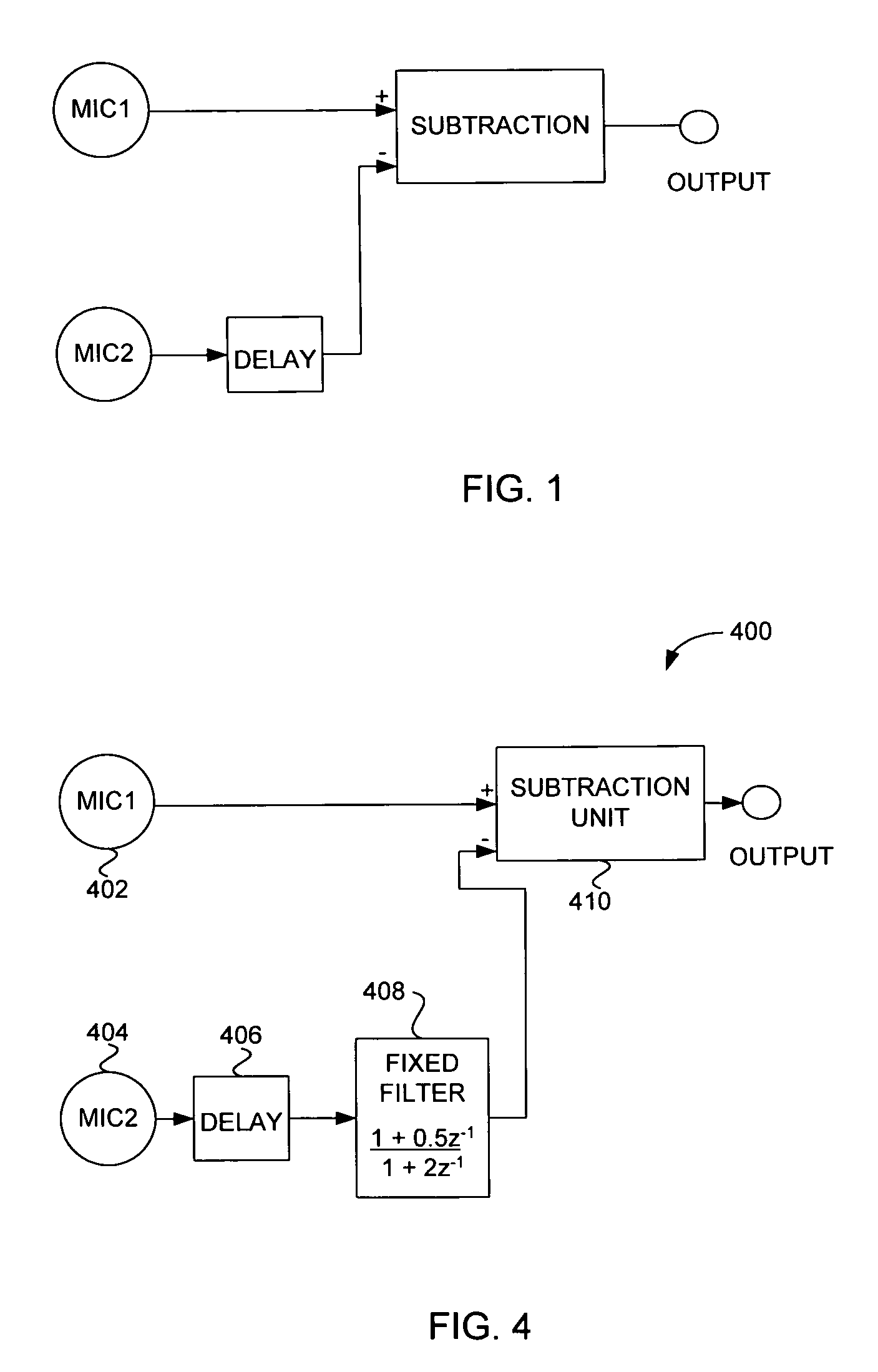Adaptive microphone matching in multi-microphone directional system
- Summary
- Abstract
- Description
- Claims
- Application Information
AI Technical Summary
Benefits of technology
Problems solved by technology
Method used
Image
Examples
Embodiment Construction
[0030]The invention relates to improved approaches to matching sensitivities of microphones in multi-microphone directional processing systems. These approaches operate to adaptively match microphone sensitivities so that directional noise suppression is robust. As a result, microphone sensitivities remain matched not only over time but also while in actual use. These approaches are particularly useful for hearing aid applications in which directional noise suppression is important.
[0031]According to one aspect, the invention operates to adaptively measure a sensitivity difference between microphones in a multi-microphone directional processing system, and then compensate (or correct) an electronic sound signal from one or more of the microphones. As a result of the adaptive processing, the microphones “effectively” become matched and remain matched over time and while in use.
[0032]Consequently, the invention enables multi-microphone directional processing systems to achieve superio...
PUM
 Login to View More
Login to View More Abstract
Description
Claims
Application Information
 Login to View More
Login to View More - R&D
- Intellectual Property
- Life Sciences
- Materials
- Tech Scout
- Unparalleled Data Quality
- Higher Quality Content
- 60% Fewer Hallucinations
Browse by: Latest US Patents, China's latest patents, Technical Efficacy Thesaurus, Application Domain, Technology Topic, Popular Technical Reports.
© 2025 PatSnap. All rights reserved.Legal|Privacy policy|Modern Slavery Act Transparency Statement|Sitemap|About US| Contact US: help@patsnap.com



